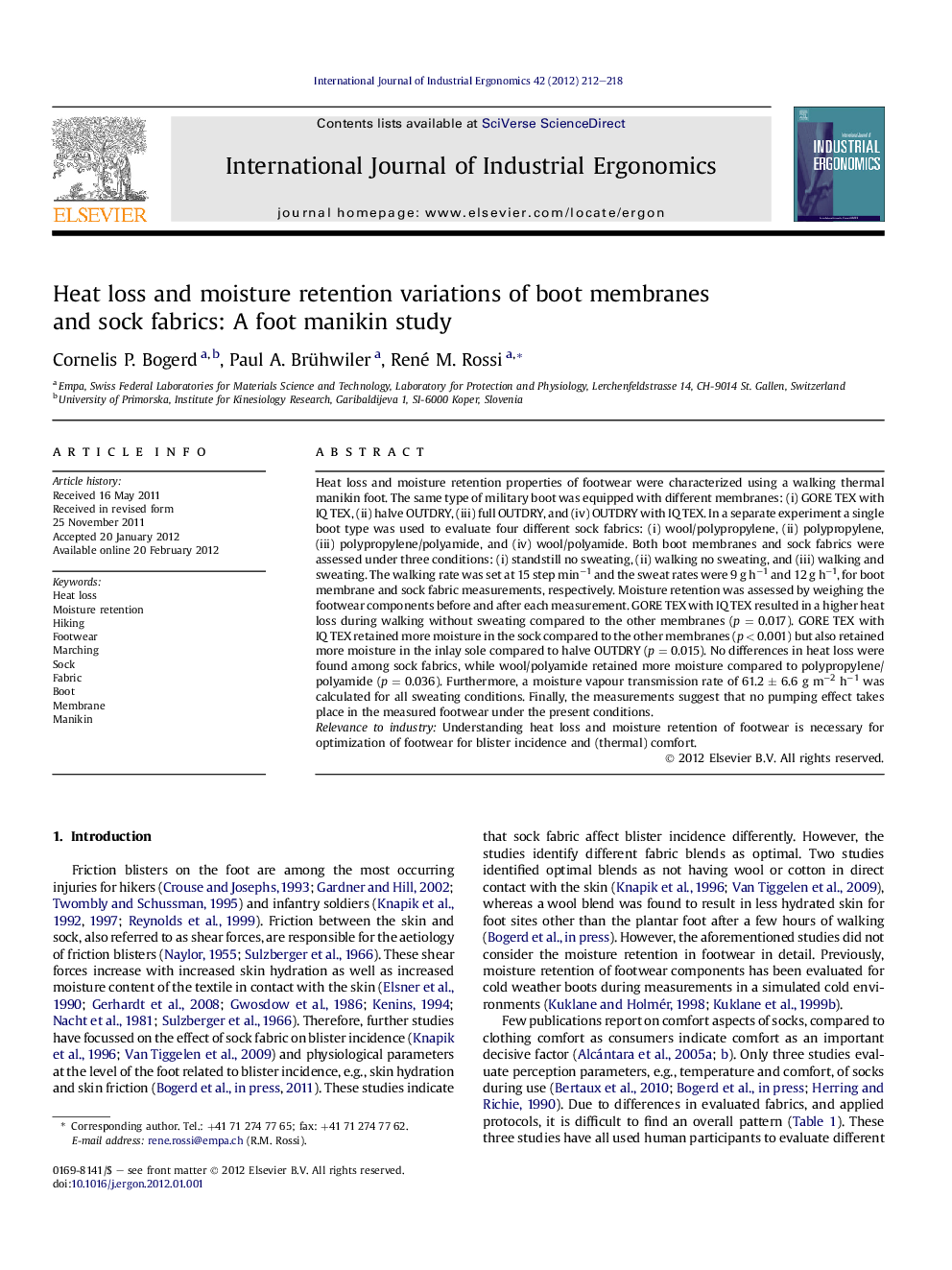| کد مقاله | کد نشریه | سال انتشار | مقاله انگلیسی | نسخه تمام متن |
|---|---|---|---|---|
| 1096402 | 1487447 | 2012 | 7 صفحه PDF | دانلود رایگان |

Heat loss and moisture retention properties of footwear were characterized using a walking thermal manikin foot. The same type of military boot was equipped with different membranes: (i) GORE TEX with IQ TEX, (ii) halve OUTDRY, (iii) full OUTDRY, and (iv) OUTDRY with IQ TEX. In a separate experiment a single boot type was used to evaluate four different sock fabrics: (i) wool/polypropylene, (ii) polypropylene, (iii) polypropylene/polyamide, and (iv) wool/polyamide. Both boot membranes and sock fabrics were assessed under three conditions: (i) standstill no sweating, (ii) walking no sweating, and (iii) walking and sweating. The walking rate was set at 15 step min−1 and the sweat rates were 9 g h−1 and 12 g h−1, for boot membrane and sock fabric measurements, respectively. Moisture retention was assessed by weighing the footwear components before and after each measurement. GORE TEX with IQ TEX resulted in a higher heat loss during walking without sweating compared to the other membranes (p = 0.017). GORE TEX with IQ TEX retained more moisture in the sock compared to the other membranes (p < 0.001) but also retained more moisture in the inlay sole compared to halve OUTDRY (p = 0.015). No differences in heat loss were found among sock fabrics, while wool/polyamide retained more moisture compared to polypropylene/polyamide (p = 0.036). Furthermore, a moisture vapour transmission rate of 61.2 ± 6.6 g m−2 h−1 was calculated for all sweating conditions. Finally, the measurements suggest that no pumping effect takes place in the measured footwear under the present conditions.Relevance to industry: Understanding heat loss and moisture retention of footwear is necessary for optimization of footwear for blister incidence and (thermal) comfort.
Journal: International Journal of Industrial Ergonomics - Volume 42, Issue 2, March 2012, Pages 212–218